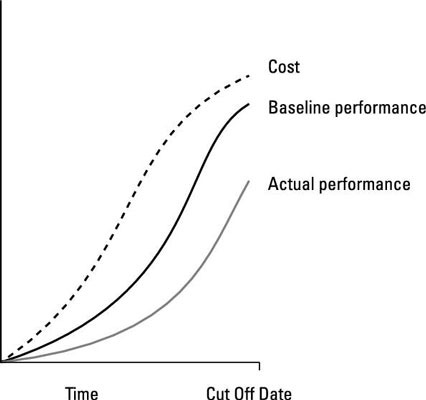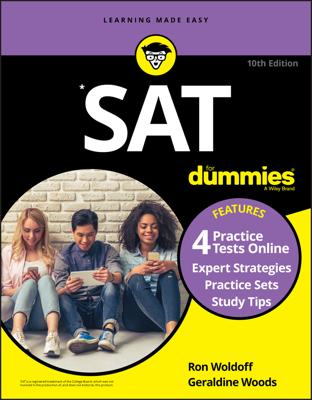The fundamental aspects of controlling procurements for PMP Certification Exam purposes are analyzing performance, managing disputes, and administering the contract. These techniques are important requirements to know about for any project.
Analyze performance
To analyze the contractor’s performance, review his performance reports. To discuss performance reviews, on-site inspections, and audits, consider this scenario. Assume that you just took over managing an aerospace project. The design, development, and manufacturing for a jet engine are outsourced to Speed of Sound (SOS) Jets. You are reviewing the performance reports, including the following summary graphic.

The contractor status graph shows you that the contractor is behind and over budget.
Procurement performance review
Based on the contractor status report, you decide that you need to go to the contractor’s location and have a meeting. You convene with your contracting officer, the SOS representative assigned to this contract, your technical lead, and your quality assurance team lead.
You ask the SOS contractor to have his project manager, technical lead, contract administrator, and any key suppliers he deems appropriate present for the meeting. You also tell SOS that you want all technical drawings and documentation available and that you would like a tour of the facilities where the work is being done.
At the meeting, you begin by introducing yourself and asking the SOS project manager, Kevin, to bring you up to date on the past 18 months of work. Kevin states that SOS is 90% done with design and 65% done with development, but hasn’t started manufacturing.
He states that SOS had problems with the thrust on the first prototype and had to go back and redesign some parts. The redesign, retooling, and machining put SOS behind schedule and over budget.
Your technical expert is reviewing the drawings and concurs with the project manager’s explanation. You ask Kevin to discuss ways to get the schedule back on track and look for ways to minimize the overrun while the technical lead and QA team member tour the facility and look at the new prototype.
Inspection and audit
The quality assurance team member and technical lead validate the progress as reported and also verify that the work done so far is acceptable. They are also looking at the processes for material check-in, usage, and reporting to make sure that your company is charged only for material used on your project.
Your contracting officer and the SOS contract administrator are reviewing the terms of the contract. SOS believes there have been some constructive changes to the original design. The two contracts people are discussing this issue. If they can’t come to a resolution about the situation, it might turn into a claim that will need to be settled per the contractual language.
Claims and disputes
Take a look at the claims and dispute resolution options.
Claim. A request, demand, or assertion of rights by a seller against a buyer, or vice versa, for consideration, compensation, or payment under the terms of a legally binding contract, such as for a disputed change.
Alternate Dispute Resolution (ADR). A means to settle claims or disputes without litigation. The two primary means of ADR are Arbitration and Mediation.
Mediation. A method of ADR used to settle claims and disputes informally. An independent party aids in settling the claim or dispute between the parties.
Arbitration. A method of ADR used to settle claims and disputes without litigation. An impartial third party, usually a professional arbitrator, hears the testimony and reviews evidence from both sides. Both parties agree that arbitration will be binding, meaning that the arbitrator’s award is final.
The contract will have a section describing how disputes and claims should be handled. The preferred method of handling disputes is to first try and negotiate a settlement. If the two parties can’t come to an agreement, they will have to use some form of ADR.
Force majeure and liquidated damages
Two additional contractual terms that you should be familiar with for the exam are force majeure and liquidated damages.
Force majeure is usually associated with natural disasters or “acts of God.” It allows the seller a delay for delivery.
Force Majeure. An event that is the result of elements of nature; sometimes also referred to as “acts of God.” A force majeure event allows a party to delay its contractual obligations because of circumstances beyond its control, such as unusually bad weather, natural disasters, political uprisings, strikes, and so on.
Liquidated Damages. A contract provision that establishes a predetermined award if a party fails to perform as promised. Liquidated damages can only be compensatory damages — to make the injured party whole again. If they are disproportionately large, they are unenforceable. Liquidated damages are damages that are reimbursed on a set value.
Contract administration
The contract administration function is about using the internal systems to maintain contract compliance. For example, all changes to the scope of work, the schedule, or contractual terms must follow the contractually stipulated terms and conditions.
The payment system is used to match up a contract number, the SOW, invoices, and accounts payable categories. All invoices need to be matched to an SOW on an active contract. In some instances, the project manager may need to sign off before an invoice is paid.
A records management system keeps all correspondence associated with a contract in order. The system includes procedures, software, and processes needed to maintain the contract information throughout the life of the contract.
Expect to see test questions regarding administering procurements that deal with the following knowledge and skills:
Project performance metrics (cost, duration, effort)
Controlling performance against the project management plan
Variance and trend analysis techniques
Change management techniques
Integrated change control techniques
Cost analysis techniques
Problem-solving techniques, including root cause analysis
Risk identification and analysis techniques
Risk response techniques
Performance measurement and tracking techniques, including CPM, PERT, and EVM
Reporting procedures

